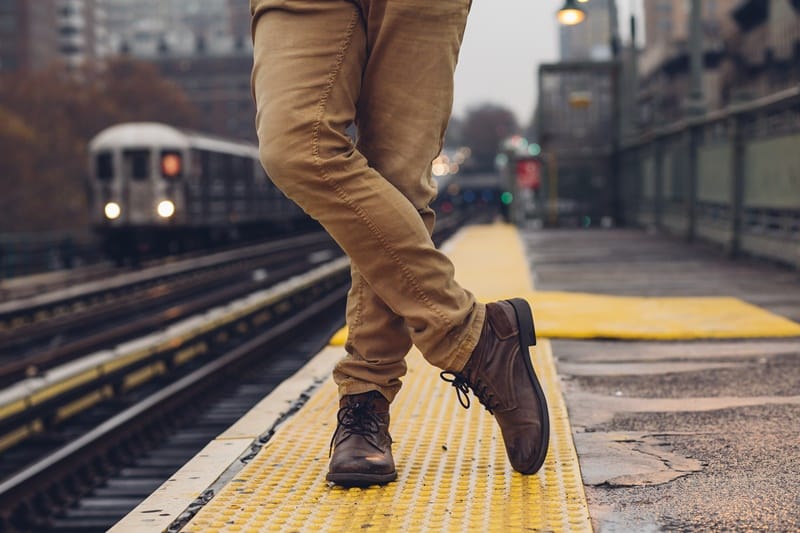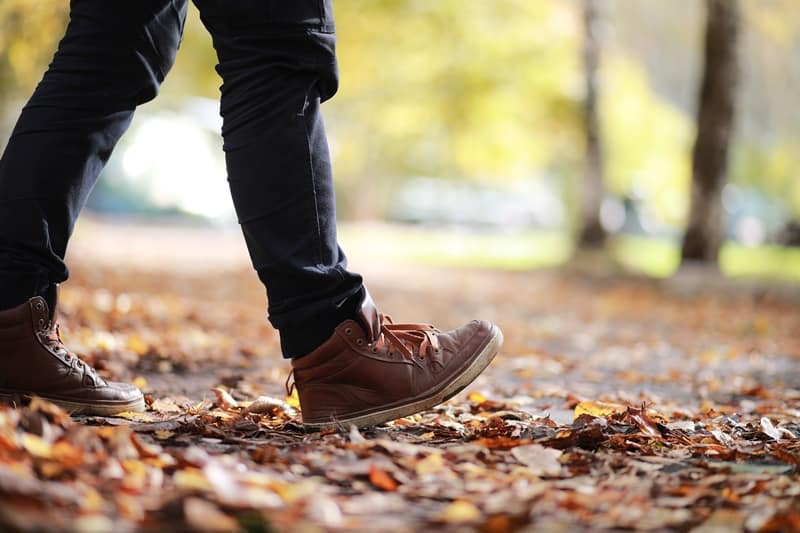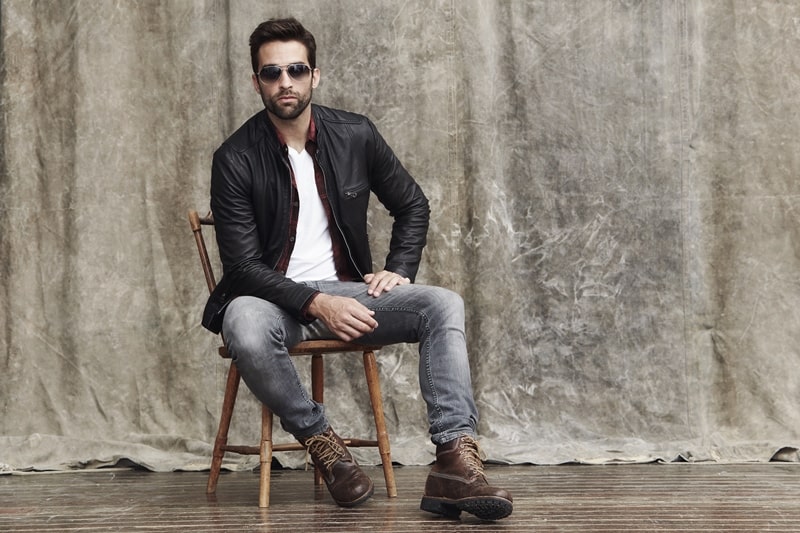
How To Break in New Boots
People love wearing boots for different occasions. You can wear them as everyday work boots, as stylish footwear for winter outfits, or just with any casual outfit you like. Although they look great, they also have the potential to give you painful blisters, especially when they’re brand new, as new boots tend to be very tough on your feet.
Blisters from wearing shoes can last anywhere between a few days to a couple of weeks. The only way to avoid this is by breaking in your new footwear. Most shoes typically have to be broken in, but boots take a lot longer than most. That is simply the price of wearing something sturdy that is designed to protect you from the elements.
If you recently bought a new pair, check out our detailed guide on how to break in new boots.
See more about - The 10 Best Duck Boots For Men In 2021
Slowly and Safely

The most common way to break in your brand new boots is by taking it slow. You can wear them for a couple of hours every day until they lose most of their toughness. Make sure to remove them once your feet begin to get tired or uncomfortable. If you wear them for too long, your feet will get sore and blisters will begin to form. When you wear them to work, remember to bring an extra pair of more comfortable shoes as your backup.
A good strategy is to wear your boots every morning when going out for breakfast, coffee, or even while walking your dog. These activities typically take about an hour or so, which is just enough time for your feet to remain comfortable. After a couple of weeks, you can start wearing your boots for the whole morning at the office.
If you follow this routine consistently, your boots should be broken in comfortably after a month or two. You can even wear them while just walking around at home. Do it when you are cooking food, doing chores, or just relaxing in the living room. Another short activity you can wear your boots to is buying groceries. A trip to the supermarket generally takes less than an hour, so your feet should be able to handle that.
During the first few weeks, make sure not to wear your boots for too long or on strenuous activities. Do not go hiking, walking long distances, or running in them just yet. Also, wear thick, soft socks to protect your feet. It will also help if your feet stay warm and dry. Sweat can cause your feet to slide around more and potentially cause blisters.
Force It

Another way to break in your new boots is by forcing the process. You just need to replicate how the material actually moves when you are walking in them. This is the fastest but riskiest way to break in your boots. If you do it correctly, your boots should be good to go in just a couple of days. However, you may end up damaging your brand new boots if you apply too much pressure on the wrong areas.
You can start by stepping on your shoes. Try not to put your whole weight on them, but put just enough to work out the material. Stepping on your boots will bend them similarly to the angle when you walk in them. Another option is by squeezing them with your hands and slightly bending the sole.
Squeezing or crushing the boots with your hands will stretch out and soften their material. Remember to be gentle and not bend the sole too much. Only keep it to normal angles that will happen if you were actually wearing and walking in them.
If you want to take a more proactive approach, you can try exercising while wearing your new boots. This strategy might cause blisters, but it will definitely break in your boots much quicker. Do this for about 10 to 15 minutes a day so your feet won’t get sore. You can do a little jogging, jumping, and other light exercises. If you have hiking or sports socks, wear them while exercising to keep your feet comfortable.
See more about - The 12 Best Lace-Up Boots For Men In 2021
Things to Remember

Get High-Quality Boots
The best way to prevent blisters and sore feet is by buying high-quality boots from trusted brands. Boots are an important investment, especially if you live in cold areas. If you buy cheap ones, you will end up with low-quality material that will wear out quicker and may end up hurting your feet in the long run.
Purchasing a top-quality pair will last you several years and are usually much easier to break in much. So, if you get the best boots available, you might not even need to break them in for very long.
Get the Right Size
Finding the right size of boots is one of the most important factors to consider. By having a good fit, your feet won’t slip inside the footwear while walking, leading to blisters. You also do not want a pair that is too tight, as boots tend to have tough materials.
Always choose boots that are just the perfect fit for you especially if you are the type to do a lot of walking and hiking. Get a pair that is not too tight, but snug enough to keep your feet in place. Always try them on before buying, as different brands have different size standards.
Also, take note that your sneaker size will sometimes differ from your boot size because sneakers are much more forgiving in their fit. If you are unsure of your size or buying your first boots ever, ask for help from store employees. Most stores will have the right measuring devices to make sure you get the correct size.
Adjust the Laces
Boots will always be a little tighter in the beginning. To counter that, you can adjust your laces to be more comfortable. As you break the shoes in, they will gradually feel more spacious.
Try loosening up your laces if your boots are new as this makes it easier to ease in and helps prevent you from getting blisters. Once you have broken them in, you can tighten the laces again to give you a snug fit.
Clean Your Boots Regularly
Having clean footwear is very important. If the leather in your boots gets too wet, too dry, or covered in mud, it may end up deformed. You need to make sure your boots are clean and have access to fresh air to prevent shrinkage and flaking. If you keep them in hot places, the leather will end up drying out.
If you leave them out in the cold too often, your boots will toughen up and all that breaking in will be for nothing. Room temperature is the optimal setting to keep your boots in. Even then, you should wipe them clean every week or so, to remove accumulated dust.
You can also use leather conditioners to keep your boots lubricated and maintain their natural color. Some products even make your boots water repellent so they will be protected from the elements at all times. Leather conditioner keeps your boots smooth, soft, and breathable. Make sure to only get trusted products that do not include harmful ingredients.
See more about - The Top 34 Men’s Fashion Shoes Ideas
What Not to Do

Do Not Soak Your Boots in Water
Some guides may suggest that you soak your boots in water to soften them. You should not do this, especially with classic leather boots made from traditional materials such as cork. The water will ruin the footwear and result in them being damaged a lot sooner than expected.
This method may work better for boots that use synthetic materials such as certain types of hiking boots. A common practice is to soak the boots in warm water for about an hour before drying them off with a towel or sun-drying them.
Do Not Blow Dry Your Boots
Another method that some people have suggested is blow-drying your boots with warm air. This is quite risky as the heat can end up damaging or even melting some of the materials in your boots. If you are going to do it regardless, just make sure the air is not too hot and do not do it for extended periods.
The idea is to make the leather more malleable using heat. The problem is that leather can turn from malleable to dry in a matter of seconds. Although it is a risky method, you can use it for specific areas of your boots that hurt your feet. For instance, if a toe is rubbing on a certain area too much, the leather may be too stiff there. The same principle applies to the ankle area.
Do Not Use Shoe Stretching Sprays
There have been several products in recent years claiming to stretch your boots and shoes enough without having to break them in. These sprays will claim that they stretch the leather to mold to your feet. The problem is that most of these solutions contain alcohol, which is bad for leather.
Remember that leather is basically animal skin. Do not use anything on it that you would not use on your own skin. That includes copious amounts of rubbing alcohol and other chemicals.
If you really want to test if these shoe stretching sprays work, try them on an older pair of boots that you don’t mind damaging. You can also experiment by buying a cheap pair and seeing if the sprays end up breaking them in. Whatever the case may be, this is an expensive and risky method that is just not worth it most of the time.
Boot Stretchers Are Rarely a Good Idea
Boot stretchers will definitely stretch out the leather and other materials, but the fit will be your problem. Remember that all feet have different shapes and sizes and boot stretches cannot break in your boots to the exact size and shape of your feet.
Unless you have custom-made boot stretchers that are shaped exactly like your feet, you should not do this method. A boot stretcher functions the same as if you wear your boots for a long time. It will end up stretching the leather in areas you do not want it to while being too tough on others.
For example, it may give you a lot of room in the heel and toe area but can remain too narrow in the midfoot area, especially if you have wide feet. If you have even more irregular shapes on your feet like large ankles, extra big toes, or protruding joints, you are likely to struggle even more
See more about - A Comprehensive Guide To Cleaning Your White Sneakers
